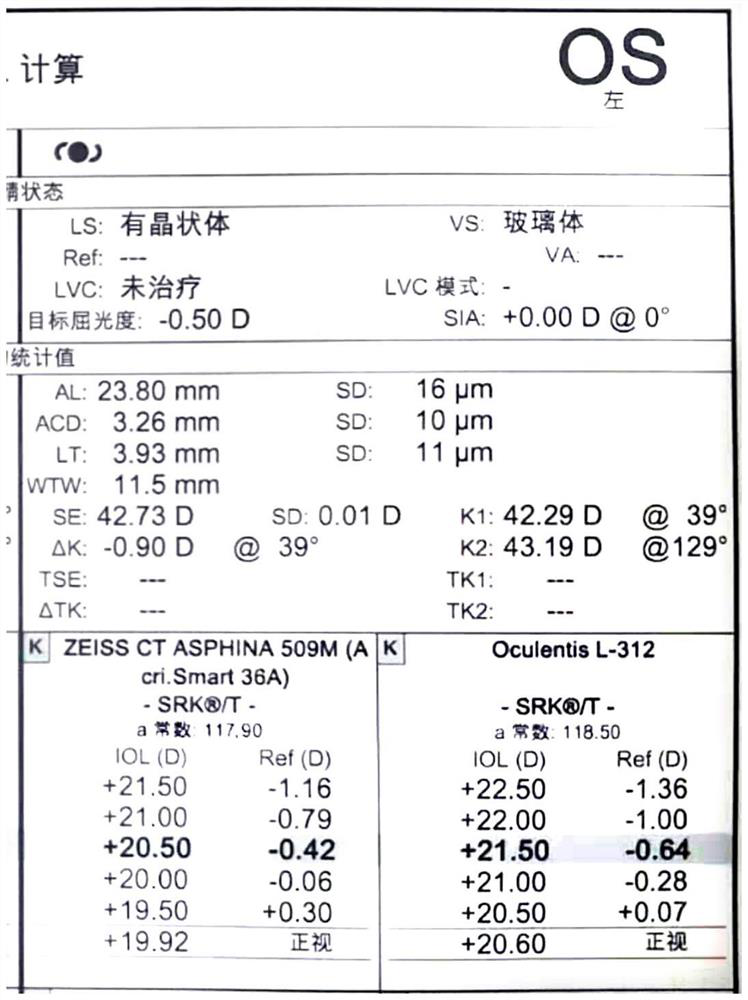Monofocal intraocular lens whole-course vision planning method
An intraocular lens and single-focus technology, which is applied in the fields of retinoscopy, medical science, optometry, etc., can solve the problems of time-consuming, indistinguishable, and use position deviation, etc., and achieve the effect of increasing the rate of tripping and improving the success rate
- Summary
- Abstract
- Description
- Claims
- Application Information
AI Technical Summary
Problems solved by technology
Method used
Image
Examples
Embodiment Construction
[0029] like Figures 1 to 2 As shown, a single-focal intraocular lens full-range vision planning method includes the following steps:
[0030] 1) To collect the data of the total corneal refractive power in the pupil area, you can choose PENTCAM, Sirius and other equipment to measure and collect. Of course, this kind of equipment is calculated through photography, not direct measurement; you can also choose equipment such as oct to directly scan the cornea to measure and collect ;
[0031] 2) After the above-mentioned equipment is used to measure and collect data, the distribution of the total corneal diopter in the pupil area is obtained, and the K 最小值 --K 最大值 , the K最小值 With light energy distribution;
[0032] 3) Put K in step 2 最大值 -K 最小值 ≥1.6D is screened out, and 1.6D is the refractive span;
[0033] 4) The full corneal diopter screened in step 3 is used to plan the overall vision of the monofocal intraocular lens.
[0034] About K in the present invention 最小值 Wit...
PUM
 Login to View More
Login to View More Abstract
Description
Claims
Application Information
 Login to View More
Login to View More - R&D
- Intellectual Property
- Life Sciences
- Materials
- Tech Scout
- Unparalleled Data Quality
- Higher Quality Content
- 60% Fewer Hallucinations
Browse by: Latest US Patents, China's latest patents, Technical Efficacy Thesaurus, Application Domain, Technology Topic, Popular Technical Reports.
© 2025 PatSnap. All rights reserved.Legal|Privacy policy|Modern Slavery Act Transparency Statement|Sitemap|About US| Contact US: help@patsnap.com


